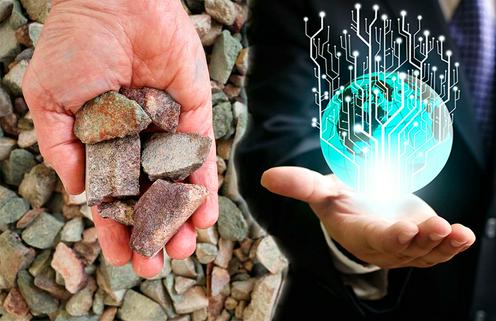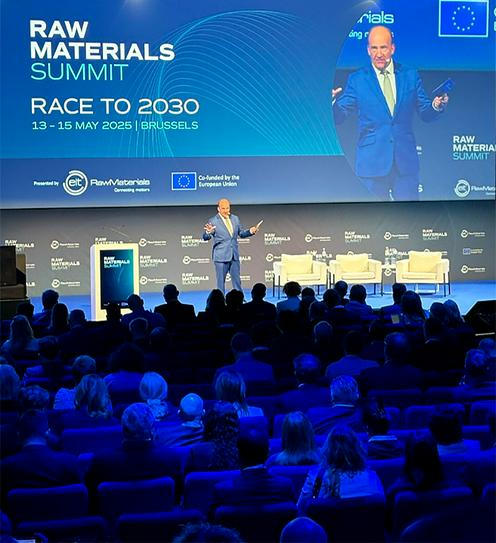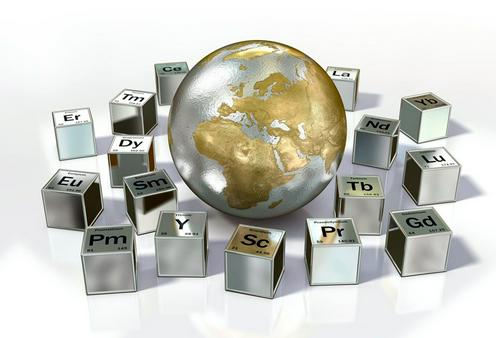An anticipated development has taken place — Uzbekistan has officially joined ERMA, the European Raw Materials Alliance. ERMA shapes Europe’s resource policy and secures supplies of materials such as lithium, tungsten, molybdenum, and rare earth elements. It is commonly said that the alliance plays a key role in Europe’s transition to green technologies and the development of the energy of the future. That is true, but such wording is more a ritual nod to ecology and technical progress. More precisely, without critical raw materials, modern society simply cannot function — which is exactly why they are called “critical.”
Unattainable Goals
Critical raw materials are natural resources essential for the economic and technological development of countries, particularly in the production of high-tech products. Their deposits are usually geographically limited, their volumes often restricted, and their extraction and processing complex. Such resources include rare earth elements (REEs), strategic metals, and several other minerals.
The European Raw Materials Alliance (ERMA), also known as the European Alliance on Critical Raw Materials, was established in 2020. Its main goal was to ensure the European Union’s supply of raw materials for high technologies. Considering that advanced technologies are now embedded everywhere, one might say the issue was nothing less than the technological survival of the EU.
Until 2020, Europe relied on supplies of critical raw materials from a small group of countries. China dominated, providing 98 percent of rare earth elements. Turkey followed, supplying 98 percent of borates, and South Africa covered 71 percent of the EU’s platinum demand.
In practice, these figures meant Europe was almost entirely dependent on supplier countries, with virtually no room to maneuver. This dependence severely constrained Europe’s ability to act in its dealings with its partners. Since both China and Turkey are effectively autocracies, Europe inevitably faced ideological clashes with them from time to time, at least in political and human rights arenas. There was no guarantee that, in defending their political interests, supplier countries would not cut off exports of critical raw materials to Europe. Something similar had already happened in U.S.–China relations when, in December 2023, Beijing announced restrictions on exports of certain critical materials to America. It is worth noting that China is the global leader in supplying key minerals and, until recently, controlled nearly 60 percent of rare earth mining operations and more than 85 percent of the world’s processing capacity. In that system, China could realistically push European industry and agriculture to the brink.
Most likely, these sober considerations led to the creation of the alliance. In addition, satellite surveys revealed that Europe itself has substantial deposits of cobalt, bauxite, beryllium, bismuth, gallium, germanium, indium, niobium, and borates — the challenge was simply to begin developing them. The expectation was that, within a few years, the EU could almost entirely supply its own battery production with domestic resources.
At the alliance’s launch, then–EU Commissioner for the Internal Market Thierry Breton declared: “When we speak of strategic autonomy, or what is sometimes called sovereignty or resilience, we are not talking about isolation from the world, but about choice, alternatives, and competition, avoiding undesirable dependencies both economically and geopolitically.”
Still, absolute independence from importers was out of reach for the EU. For better or worse, Europe cannot fully meet its own needs for critical raw materials, so turning to new markets was more than timely.
Subsequent events — particularly the Russian-Ukrainian conflict — confirmed the wisdom of the EU’s new strategy. Russia fell under sanctions and could no longer serve as a source of strategic raw materials for Europe, while for Ukraine, exporting such resources in wartime conditions became extremely difficult.
What is more, it soon became clear that the shortage of critical raw materials had grown into a defense problem for the EU.
European security and defense took center stage at the EIT RawMaterials Summit, held in Brussels from May 13 to 15, 2025. There, participants spoke bluntly: Europe lags far behind in securing critical raw materials needed for military production.
The summit addressed, in particular, the targets of the European Critical Raw Materials Act (CRMA) set for 2030. Earlier plans envisioned covering 10 percent of the EU’s annual demand through domestic mining, 40 percent through domestic processing, and 25 percent through recycling within the EU. Another key goal was to reduce dependency on single suppliers so that no one country would provide more than 65 percent of any specific critical raw material.
But Allard Castelein, special envoy of the Dutch Ministry of Economic Affairs for raw materials, remarked that these targets were simply unattainable. Benjamin Gallezot, interministerial delegate in the office of the French prime minister, confirmed that the volumes of strategic materials required for defense were small, while stressing the need to build stockpiles. He added that in 2023, the French government had passed laws requiring defense-sector companies to establish such reserves.
Adding another dose of realism, Ukraine’s deputy defense minister, Oleksandr Kubrakov, noted that over the past decades, political instability had forced Ukraine’s mining industry to focus on short-term projects. However, since Ukraine is in the process of joining the EU, Kubrakov argued, “the time has come to act again.” He suggested that European companies could already begin participating in Ukrainian projects at the feasibility-study stage. In practice, of course, engaging in such ventures in a country at war is highly risky, with uncertain prospects.
Fortunately for the EU, Central Asian countries have stepped in to help resolve the critical raw materials challenge.
Who Depends on Whom
An important step in advancing the goals of the European Raw Materials Alliance was the tour of EU Commissioner for International Partnerships Josef Síkela to Central Asian countries, held from March 12 to 18, 2025.
The visit focused on key points of the Global Gateway program, conceived as a European alternative to China’s Belt and Road Initiative. One of the strategy’s four main pillars is cooperation in the field of critical raw materials.
On March 13 in Astana, the EU and the countries of Central Asia signed an agreement to deepen collaboration in this area. The accord covered, above all, rare earth elements, as well as lithium, cobalt, uranium, and other materials essential for high-tech industries, including battery manufacturing, renewable energy, digital technologies, and the defense and space sectors.
This is the right moment to clarify what exactly counts as critical raw materials. According to the most recent list approved by the European Commission in 2023, these include boron, bismuth, cobalt, copper, gallium, germanium, lithium, magnesium, manganese, natural graphite, nickel, platinum group metals, and rare earth elements used in magnets (neodymium, praseodymium, terbium, dysprosium, gadolinium, samarium, cerium). Also on the list are silicon, titanium, tungsten, antimony, bauxite, beryllium, feldspar, fluorspar, hafnium, helium, niobium, phosphate rock, phosphorus, coking coal, scandium, strontium, tantalum, and vanadium. Half of these are considered strategic. Graphite, for instance, is used in the production of aircraft, submarines, tanks, and missiles. Lithium is vital for metallurgy, pharmaceuticals, nuclear power, and, of course, battery manufacturing. Bismuth is widely applied in medicine, electronics, and metallurgy.
In short, modern life is unimaginable without critical raw materials. It is hardly surprising that Europe has been working actively to expand ties with countries that possess such deposits.
In this regard, the first “Central Asia–European Union” summit, held in Samarkand on April 3–4, 2025, was of particular importance. Key participants included the presidents of Uzbekistan, Kazakhstan, Kyrgyzstan, Tajikistan, and Turkmenistan, as well as European Commission President Ursula von der Leyen, European Council President António Costa, and European Bank for Reconstruction and Development President Odile Renaud-Basso.
One of the four priority areas of the summit was critical raw materials. Symbolically, just before the event, a major rare earth deposit was discovered in Kazakhstan. At the summit, Ursula von der Leyen noted that Central Asia holds 40 percent of the world’s manganese reserves, as well as significant deposits of lithium, graphite, and many other resources.
It should be noted that the countries of the region had already taken steps to enter the global stage in the field of critical raw materials. In September 2023, the “United States–Central Asia” summit was held. The joint “C5+1” declaration specifically emphasized the creation of sustainable and reliable supply chains for critical minerals, as well as the development of new technologies for extraction and processing. In November 2023, it was announced that the French company Orano would invest up to $500 million in uranium mining and processing in Uzbekistan. In March 2024, Kazakhstan and the United Kingdom signed a Roadmap on Strategic Partnership in the Field of Critical Minerals, and in September of the same year, Uzbekistan and the United States reached a similar agreement. On November 6, 2024, Uzbekistan and the European Union signed a roadmap for implementing the memorandum on strategic partnership in developing sustainable value chains for critical raw materials.
Henrik Hololei, chief adviser to the Director-General of the European Commission for International Partnerships, at the time stressed the importance of signing the roadmap and emphasized that European companies would gain new opportunities in such fields as mining, geological research, and geodata analysis. He also stated that critical materials would remain a priority in cooperation between Uzbekistan and the EU for many years to come.
Uzbek Technological Metals Plant (UzTMK), engaged in the mining and processing of critical minerals in Uzbekistan. Photo: uztmk.uz
This cooperation, reinforced by Uzbekistan’s accession to the European Raw Materials Alliance, holds great promise. First, it increases the political weight of the republic by giving it more leverage in international diplomacy and trade negotiations. Second, it strengthens strategic partnerships and attracts long-term investment—that is, it enriches Uzbekistan in every sense, which is especially important given that the current leadership’s domestic policy priority is the fight against poverty. Third, working with critical raw materials allows Uzbekistan to develop and diversify its economy, moving it beyond familiar boundaries.
It should be noted that when it comes to raw materials, such topics almost always provoke strong emotions among environmental activists and critics of so-called neocolonialism. On the one hand, any mining activities affect the environment; on the other, they ask, what is the purchase of mineral wealth if not a colonial policy toward developing countries?
In this case, however, such simple demagoguery does not hold up. Any project proposed by the EU always includes measures to ensure environmental safety as an integral part. Moreover, Europe makes it clear that it does not seek merely to export valuable raw materials, but instead proposes a fundamentally different approach: the creation of a complete production cycle within the region itself. This is not just about investment but about equipping Central Asian countries with advanced technologies, fostering development, and creating new jobs.
The current situation clearly shows that the division between developed and developing countries is a rather relative concept. At present, not only do developing countries depend heavily on developed ones, but the reverse is also true. In this sense, Uzbekistan’s accession to the European Alliance on Critical Raw Materials reflects new thinking and new perspectives—not only for the flagships of the global economy but also for countries with comparatively modest political, economic, and military weight.
-
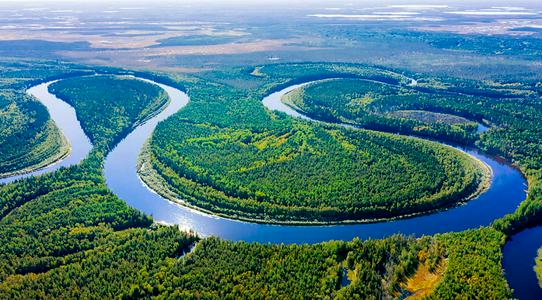 24 November24.11Here’s a New TurnRussian Scientists Revive the Plan to Irrigate Central Asia Using Siberian Rivers
24 November24.11Here’s a New TurnRussian Scientists Revive the Plan to Irrigate Central Asia Using Siberian Rivers -
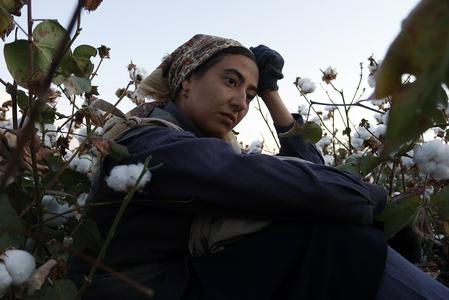 11 November11.11To Live Despite All HardshipUzbek filmmaker Rashid Malikov on his new film, a medieval threat, and the wages of filmmakers
11 November11.11To Live Despite All HardshipUzbek filmmaker Rashid Malikov on his new film, a medieval threat, and the wages of filmmakers -
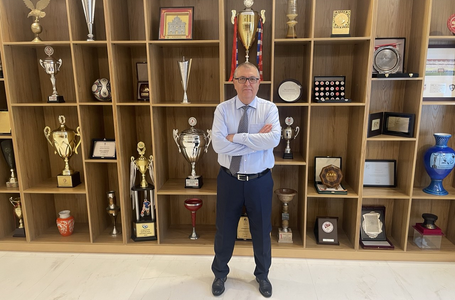 01 November01.11Catching Up with UzbekistanAlisher Aminov on the Problems of Kazakh Football and Plans to Fix Them
01 November01.11Catching Up with UzbekistanAlisher Aminov on the Problems of Kazakh Football and Plans to Fix Them -
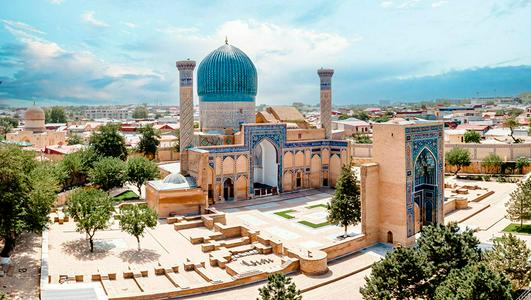 22 October22.10Older Than the Eternal CityWhat has Samarkand accomplished in its three thousand years of existence?
22 October22.10Older Than the Eternal CityWhat has Samarkand accomplished in its three thousand years of existence? -
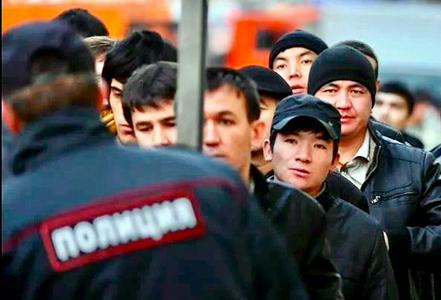 16 October16.10Digital Oversight and Targeted RecruitmentRussia Approves New Migration Policy for 2026–2030
16 October16.10Digital Oversight and Targeted RecruitmentRussia Approves New Migration Policy for 2026–2030 -
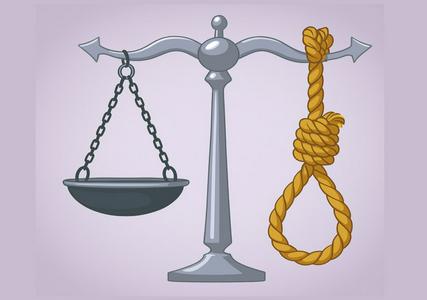 15 October15.10A Step Back into the Middle AgesWhy Kyrgyzstan Should Not Reinstate the Death Penalty
15 October15.10A Step Back into the Middle AgesWhy Kyrgyzstan Should Not Reinstate the Death Penalty
